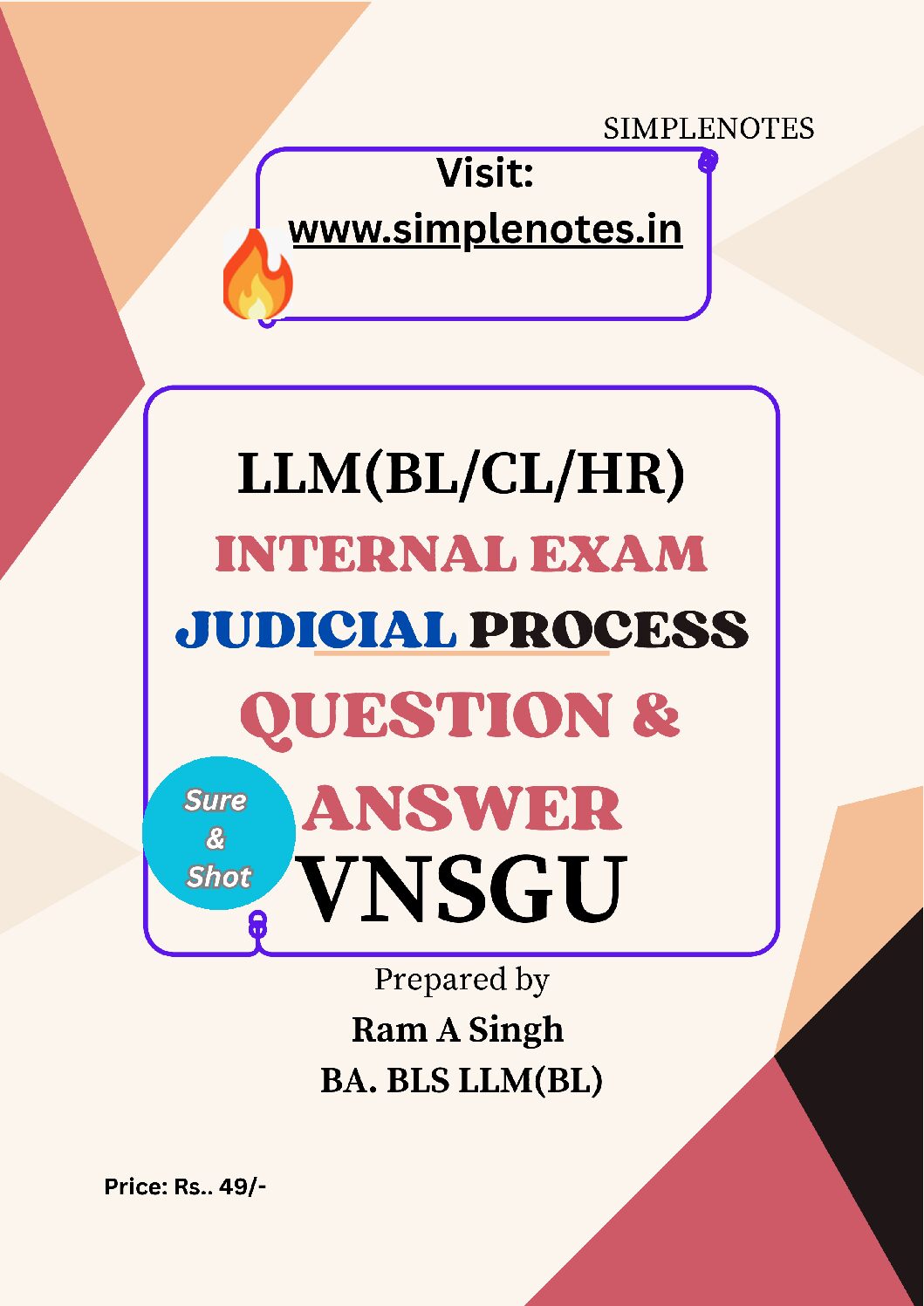Introduction : The Legal World is Changing Faster Than You Think
Synopsis
Not long ago, legal work meant hours spent flipping through law books, digging into past judgments, and drafting documents from scratch. Today, things look different. Lawyers across the globe, from small town courts in India to high-powered law firms in the United States, are turning to a new kind of assistant artificial intelligence.
The rise of AI in the legal profession in India and worldwide is no longer just a concept discussed in tech journals. It is real. It is happening. And it is changing the way legal professionals work. Tasks that once took days can now be completed in minutes. But this shift is not just about saving time. It is about rethinking what it means to practice law.
You may like this : 7 Shocking Truths About Regionalism in India’s Union of States
You might wonder, how is AI used in the justice system? The answer varies by region, but the impact is global. Courts are beginning to use AI tools to support legal research. Law schools are introducing AI driven training. In some countries, AI is even helping judges analyze case patterns.
Still, there’s a big question hanging in the air relying on AI in judicial decision-making: justice or jeopardy? The idea of machines influencing verdicts makes many people uneasy. Can AI truly understand fairness, or will it reflect the biases built into its code?
This post takes you through 10 shocking changes AI is bringing to the legal profession globally. From legal education to courtroom decisions, these changes are transforming how we think, work, and argue in the field of law. Some of them will surprise you. Some might even worry you. But all of them are shaping the future of justice.

10 shocking changes AI is bringing to the legal profession globally
AI Is Automating Legal Research and Case Law Analysis
For decades, legal research was a time-consuming part of a lawyer’s work. Digging through dusty books, reading long judgments, and highlighting important lines was part of the routine. It was slow, repetitive, and exhausting. But now, artificial intelligence is quietly changing the game and lawyers everywhere are taking notice.
Today, AI in legal research is making it possible to find case laws, judgments, and legal interpretations in seconds. Instead of spending hours searching manually, a lawyer can type a few words and get hundreds of relevant results neatly sorted and summarized. This is happening not just in big law firms but even in smaller practices, both in India and across the world.
The AI tools for case law analysis are more than just search engines. They learn from past judgments, identify patterns, and even suggest the most likely outcome of a case based on historical data. In India, platforms like SCC Online and Manupatra are integrating AI to help lawyers prepare better arguments. In the U.S., tools like Westlaw Edge and Lexis+ are using predictive analytics to show which arguments worked in which courts.
These systems don’t just save time. They offer a strategic edge. A lawyer who understands how to use AI tools can quickly spot weaknesses in the opposing argument or build a stronger case based on recent legal trends. For students, it’s like having a virtual mentor that never sleeps.
Of course, this doesn’t mean human researchers are no longer needed. Legal thinking still requires a human brain. But AI helps by removing the grunt work so professionals can focus on strategy and deeper understanding.
So when someone asks, How is AI used in the justice system? This is one clear answer. It’s making legal research smarter, faster, and more precise than ever before.
Drafting Contracts in Seconds – Smart Document Generation
Legal documents like contracts, lease agreements, and NDAs used to take hours to draft. Every word had to be carefully chosen. Clauses had to be checked, and templates had to be updated again and again. But with the rise of AI contract drafting tools, this slow process is getting a major upgrade.
Today, artificial intelligence can generate full legal documents in just a few minutes. You type in basic details, like names, dates, and the type of agreement, and the tool prepares a full draft instantly. This isn’t just a rough outline. Many AI tools now create polished, legally sound documents ready for review.
In India, several legal tech startups are working on legal document automation for courts, startups, and law firms. Tools like VidhikDastaavej and Bharatlaw.ai’s contract engines are making it easier for junior lawyers and even clients to access accurate drafts. In the U.S., products like LawGeex, Spellbook, and LegalZoom’s AI-powered tools are helping firms save time and cut costs.
This kind of automation doesn’t just speed things up. It also reduces human error. Templates are often updated with the latest legal language, keeping firms up to date with changes in law. For busy lawyers handling multiple clients, it’s a relief. For solo practitioners and small firms, it levels the playing field.
Of course, final review still needs a human touch. AI doesn’t understand the full business context. But for basic and repeat tasks, it works fast, and often better than a tired associate on a deadline.
This is another strong example of how AI is helping lawyers in India and worldwide. It doesn’t replace the legal mind — but it frees it up for more important work.
Virtual Assistants Are Managing Clients and Calendars
Lawyers often juggle a hundred things at once. Court dates, client meetings, deadlines, and follow-ups, it’s a full plate. Forgetting even one small task can create serious problems. That’s where AI virtual assistants for law firms are stepping in, changing how legal professionals stay organized.
These virtual assistants are not just fancy to-do lists. They are smart systems that can manage emails, set reminders, follow up with clients, and even respond to simple queries. They work 24/7. They never forget anything. And they don’t need coffee breaks.
In India, legal tech companies are building tools that help lawyers manage their daily routines more efficiently. In the USA, software like Clio, Lawcus, and CalendarHero is already being used by solo lawyers and big firms alike. These tools keep track of every client call, every hearing, and every filing deadline.
Let’s say you have a meeting scheduled. The AI will not only remind you but can also send confirmation messages to your client. If the client replies, the system logs the response and updates the calendar. It’s like having a smart secretary in your pocket.
More than just saving time, client management using AI in law improves the quality of service. Clients feel attended to, even outside office hours. Questions get answered faster. Appointments are handled without the back-and-forth of endless emails.
Some advanced AI tools can even prepare a brief summary of each client’s past conversations or documents before your meeting. So you walk in prepared, without having to dig through old files.
This is another example of how AI is helping lawyers in India and worldwide by giving them more time to focus on legal thinking, not administrative chaos.
Predictive Analytics Are Changing Case Strategy
One of the most surprising changes in the legal field today is how artificial intelligence is being used to predict the outcomes of legal cases. This might sound like science fiction, but it is already happening in both developed and developing legal systems. With the help of advanced tools, lawyers can now analyze how a judge might decide based on patterns from past judgments.
This growing trend is known as predictive analytics in law. These tools study thousands of past cases. They look at the decisions made by different courts. They identify which arguments succeeded and which ones failed. Based on this information, the AI gives insights about how a current case might unfold.
In the United States, tools like Lex Machina and ROSS Intelligence offer detailed outcome predictions for litigation and patent cases. In India, the Supreme Court is experimenting with SUPACE. This is a special system designed to help judges analyze documents and relevant precedents. It saves time and gives judges more clarity on complex matters.
Many lawyers say that this technology gives them a new kind of advantage. Instead of going into a case blindly, they can now prepare with data-backed confidence. It helps in forming smarter strategies and knowing which legal arguments to focus on.
But this technology also brings serious concerns. If we start relying too much on these tools, are we risking fairness? Relying on AI in judicial decision-making justice or jeopardy is a question that many experts are asking today.
Despite the concerns, AI legal outcome prediction is becoming more common around the world. It is clear that predictive tools are not replacing lawyers. They are becoming a guide that helps legal minds see patterns and avoid costly mistakes.
AI in Legal Education – Smart Classrooms and Simulated Cases
The way law is being taught is also changing fast. Classrooms are no longer limited to textbooks and lectures. AI in law schools is opening up a new way of learning. From India to the United States, many legal institutions are introducing artificial intelligence into the curriculum.
Law students are now using smart tools that go beyond theory. These platforms allow them to draft legal documents, simulate real court cases, and research case law using AI. This kind of learning was unthinkable just a few years ago. It is helping students gain practical skills that will prepare them for the modern legal world.
In India, some universities are already using AI-backed systems that teach students how to analyze judgments and build legal arguments. These systems give feedback in real time. In the USA, law schools like Stanford and Georgetown are experimenting with AI labs and virtual case simulations. Students are asked to solve legal problems using both law and technology.
This is a big shift from the traditional method of rote learning. With the help of legal tech training for students, future lawyers can now practice decision-making, document drafting, and legal strategy before even stepping into a courtroom.
But the benefits go beyond skill development. Students also learn to ask deeper questions about law and ethics. They begin to understand how AI tools work and where their limits lie. This matters because the next generation of lawyers will not just use these tools. They will also help shape the rules that control them.
How AI is changing legal education is one of the most important stories in modern law. It is not just about smart tools. It is about smarter lawyers.
AI Is Assisting Judges in Judicial Decision-Making
When we think of judges, we often picture wise individuals making decisions based on deep knowledge and years of experience. That image still holds true. But now, many judges are also getting help from machines. Around the world, AI in courts is becoming more common.
In India, the Supreme Court has developed a system called SUPACE. It is designed to help judges filter large volumes of case files. The system highlights important parts of a case and suggests relevant laws and past judgments. It does not make decisions. It simply helps the judge see the case more clearly and make faster choices.
In countries like Estonia and China, courts are testing AI in even more advanced ways. In Estonia, a digital judge handles small civil claims by reading the facts and applying the law. In China, AI tools help track corruption cases and evaluate case timelines. These systems aim to reduce the burden on judges and improve efficiency.
Still, this new way of working raises some serious questions. One of the most debated issues is this relying on AI in judicial decision-making justice or jeopardy? If AI gets a case wrong, who is responsible? Can a machine understand fairness, emotion, or social impact?
This debate is ongoing. Some judges feel that AI helps them do their job better. Others worry it might lead to overdependence. What is clear is that these systems are not making final decisions. The human judge is still in charge.
Judicial decision making with AI is not about replacing judges. It is about supporting them with better tools. With the growing number of pending cases in India and other countries, such assistance can be very helpful.
Legal Translation Tools Are Breaking Language Barriers
One of the biggest challenges in the legal world is language. Laws are written in one language, clients speak another, and courts often work in a mix of both. Misunderstandings can delay justice or even lead to wrong decisions. This is where AI legal translation tools are starting to make a big difference.
In India, where people speak dozens of languages, courts have started using AI systems like SUVAS. This tool translates court judgments from English into regional languages. It helps people understand what the court has decided, even if they do not speak English. This is a huge step toward making the legal system more accessible.
In the United States and Europe, law firms and courts are also using AI to translate legal documents, client communication, and even real-time conversations. These tools can convert complex legal language into plain, understandable text. They can also translate contracts and filings in seconds, which used to take days.
By using AI tools to break language barriers in law, legal professionals can now serve a wider range of clients. Immigrants, international businesses, and people in rural areas can understand their rights and duties more clearly. This builds trust in the legal system and speeds up the process of justice.
But translation in law is not just about words. It is about context, tone, and meaning. AI tools are improving, but they still need human review. Lawyers must ensure the translated documents are accurate and carry the correct legal message.
Still, the progress is clear. AI is helping lawyers in India and worldwide to close the language gap. It is turning courts and firms into places where more people can understand and participate fully.
Compliance and Risk Analysis Made Easy by AI
For any lawyer or business, keeping up with changing rules is a constant challenge. New laws are passed. Old ones are updated. Different states or countries have their own legal codes. Missing even a small detail can lead to big problems. This is where AI legal compliance tools are proving to be a real game changer.
In the past, teams of lawyers would spend days reading new regulations, comparing them with company policies, and preparing reports. Today, artificial intelligence can do much of that work in minutes. These tools scan through legal documents, pick out the key changes, and tell you what actions to take. They also monitor for updates in real time.
For example, a bank may need to follow dozens of privacy laws in different countries. An AI system can track all of them and alert the legal team if something changes. This helps reduce legal risks and keeps the organization safe from penalties. This kind of regulatory risk management using AI is now being used in industries like finance, healthcare, and tech.
In India, law firms and startups are beginning to use AI to track compliance with the new Digital Personal Data Protection Act. In the United States, businesses rely on AI to stay updated with GDPR, HIPAA, and state-specific laws like the CCPA. These tools are not just for big companies. Even small law firms use them to help clients stay compliant.
Of course, the lawyer is still the final checker. AI points out the issues, but it cannot replace human judgment. It simply makes the process faster, more accurate, and less stressful.
Once again, we see how AI is helping lawyers in India and worldwide to stay ahead in a complex legal world. And now, we come to one of the most talked-about topics in law today will AI replace lawyers or just change the way they work?
Job Roles Are Shifting – AI Is Not Replacing, It’s Redefining
One of the biggest fears people have about artificial intelligence is job loss. Many wonder, will AI replace lawyers in the future? The honest answer is both simple and complex. AI is not here to take over law firms. But it is changing the way legal work is done. And that means the role of a lawyer is shifting.
Instead of writing long memos or doing endless research, lawyers now spend more time making decisions, giving advice, and solving bigger problems. Tasks that used to take up a whole day can now be done by AI in minutes. This gives lawyers more time to focus on strategy, negotiation, and understanding the needs of their clients.
This shift does not mean that jobs are disappearing. It means new kinds of jobs are being created. Legal professionals who understand how to work with AI are becoming more valuable. There is now demand for people who can review AI-generated documents, manage legal tech systems, and train others to use them. Some are even becoming legal technologists — a role that did not exist just a few years ago.
In India, law firms are hiring tech-savvy lawyers to manage AI tools. In the USA, legal departments are adding roles like AI compliance managers and data ethics advisors. These positions focus on making sure the use of AI follows the law and respects fairness.
So the future of legal jobs with AI is not about robots replacing humans. It is about humans and AI working together. The best results come when technology handles the repetitive parts and lawyers handle the thinking, reasoning, and empathy.
This is another clear sign of how AI is helping lawyers in India and worldwide. It is not ending careers. It is creating smarter, more flexible ways to grow in the legal field.
Challenges Ahead – Bias, Privacy, and Regulation
While artificial intelligence is changing the legal profession in powerful ways, it also brings a set of serious concerns. These challenges are not just technical. They raise big questions about fairness, privacy, and control. Lawyers, judges, and lawmakers are now being forced to ask whether the tools we rely on are always fair and just.
One of the biggest issues is bias in AI systems. AI learns from past data. If that data includes biased judgments or unequal treatment, the AI may repeat those patterns. For example, if an AI tool is trained on judgments that show racial or gender discrimination, it might suggest similar outcomes in future cases. This is not just a flaw. It is dangerous.
Another concern is data privacy. AI tools need large amounts of information to work. That often means accessing personal or sensitive legal data. In countries like India and the United States, privacy laws are becoming stricter. In India, the Digital Personal Data Protection Act requires strong data handling practices. In the United States, regulations like GDPR and CCPA make sure that user rights are protected.
With so many AI systems working across borders, there is also a growing need for global rules. Right now, there is no common law that regulates how AI should be used in the legal profession. This creates confusion and risk. Some countries are moving fast. Others are still trying to understand what is happening. That gap can lead to misuse or uneven justice.
The truth is, ethical issues with AI in law are just beginning to unfold. Many of these tools are new. They are exciting but not yet perfect. As we adopt them, we must also build strong rules and teach legal professionals how to use AI with care.
Still, despite these concerns, AI is helping lawyers in India and worldwide to move faster, be more efficient, and focus on what matters most. The key is to use it wisely, with human oversight and strong values.
Conclusion – Preparing for the AI-Driven Legal Future
The legal world is entering a new chapter. Artificial intelligence is no longer just a tool. It is becoming part of the daily life of lawyers, judges, law students, and courts. We have seen how it is helping with research, drafting, client communication, decision-making, compliance, and even legal education. But this is only the beginning.
The future of lawyers with AI will look very different from what we see today. Lawyers will need to do more than just understand the law. They will also need to understand how technology works. That means learning how to work alongside AI, not fearing it. It means asking the right questions. Are the tools fair? Are they accurate? Are they helping the client?
For law students, this is an exciting time. You are stepping into a profession that is going through one of its biggest changes ever. Knowing the basics of AI, legal tech, and data privacy will give you a strong advantage. Whether you plan to work in India, the United States, or anywhere else, these skills will be valuable everywhere.
At the same time, we must not forget what law is really about. Justice, fairness, and human dignity. No matter how advanced technology becomes, it should never replace human judgment. AI should support lawyers and judges, not control them.
As we have seen across all sections, AI in the legal profession in India and worldwide is a growing force. It is solving old problems in new ways. But with that power comes responsibility. It is up to us to shape this future wisely.
So, how will you prepare? Will you embrace the tools that are shaping tomorrow or wait and watch from the sidelines?
The legal world is changing. It is time to change with it.
Frequently Asked Questions (FAQ)
1. How is AI used in the justice system?
AI is used in the justice system to assist with legal research, draft documents, translate court rulings, manage court schedules, and even support judges in reviewing case files. In India, tools like SUPACE and SUVAS are being tested. In the USA, AI helps law firms with compliance and case predictions.
2. Will AI replace lawyers in the future?
AI is not expected to replace lawyers but to change their roles. Routine tasks like research, drafting, and data analysis are now automated, allowing lawyers to focus more on strategy, negotiation, and advocacy. The future of legal work will involve human-AI collaboration.
3. What are the benefits of AI in the legal profession?
AI helps lawyers save time, reduce errors, manage clients better, and stay updated with changing laws. It improves access to justice by translating legal language and simplifying complex tasks. It also supports faster court processes and smarter decision-making.
4. What are the risks of using AI in law?
AI in law can carry risks such as data privacy breaches, biased predictions, and lack of transparency. Without proper human oversight, these risks can affect fairness in legal outcomes. Strong regulation and ethical standards are needed to prevent misuse.
5. Which countries are using AI in legal systems?
Countries like India, the United States, China, Estonia, and the UK are actively using or testing AI in their legal systems. Each country focuses on different areas, from AI-assisted judgments to legal translation and predictive analytics.
Bibliography / References
- NITI Aayog (2021). Responsible AI for All – Strategy Document. Government of India.
https://www.niti.gov.in/ - SUPACE: Supreme Court Portal for Assistance in Court’s Efficiency. Supreme Court of India.
https://main.sci.gov.in/ - SUVAS (2020). AI-based Translation Tool for Indian Courts. Press Information Bureau, Government of India.
https://pib.gov.in/ - LexisNexis & Westlaw Edge (Thomson Reuters). AI in Legal Research and Analytics.
https://legal.thomsonreuters.com/ - LawGeex (2022). AI Contract Review Benchmark Report.
https://www.lawgeex.com/resources/ - Estonian Ministry of Justice. AI-based Online Court Judge Pilot.
https://www.just.ee/en - Katsh, Ethan & Rabinovich-Einy, Orna (2017). Digital Justice: Technology and the Internet of Disputes. Oxford University Press.
- Susskind, Richard (2019). Tomorrow’s Lawyers: An Introduction to Your Future. Oxford University Press.
- Ashley, Kevin D. (2017). Artificial Intelligence and Legal Analytics. Cambridge University Press.
- Georgetown Law & MIT (2023). AI and the Future of Legal Work.
https://www.law.georgetown.edu/ - Stanford Law CodeX – Center for Legal Informatics.
https://law.stanford.edu/codex-the-stanford-center-for-legal-informatics/ - The Bar Council of India (BCI). Guidelines on Technology Use in Legal Education (2022).
https://www.barcouncilofindia.org - FutureLearn (2023). AI for Law Professionals – Online Course Catalogue.
https://www.futurelearn.com/
![]()









